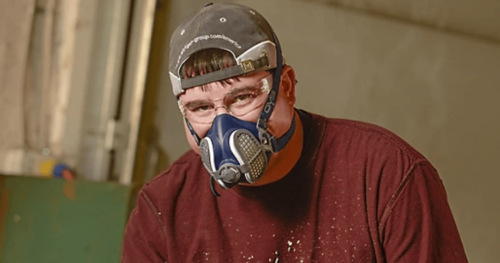In order to prevent people from breathing in dangerous substances such as dust, fumes, chemicals, and microbes, respirators are vital equipment. These gadgets are essential in a variety of contexts, including industrial sites and medical facilities. An extensive description of respirators, including their varieties, applications, and advantages, is given in this page.
What Are Respirators?
Respirators are protective devices that cover the nose and mouth or the entire face to filter out contaminants from the air. They are used to safeguard individuals from inhaling hazardous substances that can lead to respiratory illnesses or other health issues. Respirators are classified based on their design, filtration capabilities, and intended use.
Types of Respirators
1. Disposable Respirators:
• N95 Respirators: These are designed to filter out at least 95% of airborne particles, including large droplets and smaller aerosols. They are commonly used in healthcare settings and for protection against dust and pollutants.
• Surgical Masks: While not classified as respirators, surgical masks provide some level of protection against respiratory droplets and are used primarily in medical settings to prevent contamination.
2. Reusable Respirators:
• Half-Mask Respirators: Covering only the nose and mouth, these respirators use replaceable filter cartridges to protect against various airborne contaminants. They are ideal for industrial applications and environments with specific chemical or particulate hazards.
• Full-Face Respirators: These provide comprehensive protection by covering the entire face, including the eyes. They are used in environments where exposure to toxic gases, vapors, or particulates is a concern. Full-face respirators offer both respiratory protection and eye protection.
3. Powered Air-Purifying Respirators (PAPRs):
• PAPRs use a battery-powered blower to force air through filters or cartridges, providing a higher level of comfort and protection. They are often used in healthcare settings and industrial environments where high protection levels are required.
Uses of Respirators
• Healthcare Settings: Respirators are used to protect healthcare workers from airborne pathogens, including viruses and bacteria, especially during procedures that generate aerosols.
• Industrial Environments: Workers in industries such as construction, mining, and manufacturing use respirators to protect themselves from dust, fumes, chemicals, and other hazardous substances.
• Emergency Situations: Respirators are essential in emergency response situations, such as during fires or chemical spills, to protect responders from harmful airborne contaminants.
Benefits of Respirators
1. Health Protection: Respirators significantly reduce the risk of respiratory illnesses by filtering out harmful particles and contaminants from the air.
2. Enhanced Safety: In industrial and healthcare settings, respirators protect workers and professionals from exposure to dangerous substances, improving overall safety.
3. Comfort and Usability: Modern respirators are designed with comfort in mind, including features such as adjustable straps, ergonomic designs, and breathable materials to ensure ease of use over extended periods.
4. Versatility: Respirators come in various types and configurations, allowing for tailored protection based on specific hazards and needs.
Proper Use and Maintenance
To ensure effectiveness, respirators must be used and maintained correctly. This includes:
• Selecting the Right Respirator: Choose a respirator that is appropriate for the specific hazards present in your environment.
• Proper Fit: Ensure a tight seal around the face to prevent contaminants from leaking in.
• Regular Maintenance: Clean and inspect respirators regularly, replace filters or cartridges as needed, and follow manufacturer guidelines for care and replacement.
Conclusion
In many situations, respirators are essential equipment for ensuring people’s health and safety. People and organisations may choose the best respiratory protection for their needs by being aware about the many types of respirators, their applications, and their advantages. Choosing, using, and maintaining respirators correctly is essential to both general health and successful defence against airborne threats.



